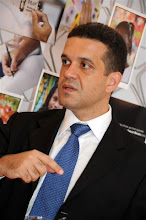- Back to Home »
- Dye-cells
The sunlight that reaches the earth’s surface represents a constantly renewable source of energy. Countries whose territories include extensive areas of land near the equator can develop and exploit the abundant sunlight that bathes their land as an alternative source of renewable energy. As solar technology advances, such efforts carry significant environmental and economic benefits.
Brazil is the fifth-largest country in the world in terms of territory, covering more than 8,500,000 square kilometers. Almost 80 percent of this land lies in the tropics between the equator and the Tropic of Capricorn.

Using natural pigements extracted of fruits as blackberry, jabuticaba and caulker (common in the region of Patagonia, in the South America), scientists of the Chemistry Institute (IQ) of the University f Sao Paulo had developed a new technology for the production of cells capable to convert the solar light into electric energy, the Dye-cells® calls - solar cells of thin layer.
Compared with the conventional systems, that they use as substance cousin the silicon, the process presents advantages as the cost of production - esteem in about 30% 50% minor - and the use of materials that do not attack the environment.
In the laboratories of the IQ already exists a 10x10 cm Dye-cell®, with the appearance of a transparent glass, that demonstrate the efficiency of the technology. Andres Sarto Polo, currently on doctoral at the Institute, explains that the system uses as semiconductor the titanium dioxide (TiO2). "This substance is used in the industry in dental creams, inks etc. For being white, it does not absorb the visible light and it needs a pigement to absorb the solar light, that can be extracted from fruits."
In tests made with caulker and jabuticaba, the researchers had obtained to reach powers around 1,5 to 2 miliwatts for squared centimeter (cm2). The control experiments come being carried through in small solar cells that presents an active area of 1/2 cm2. According to Polo, already if it knows that the system with natural pigements is capable to convert the energy proceeding from sun into electricity with efficiency around 1% to 2%.
The next steps to the studies, in accordance with Polo, will be to verify the time of useful life of the cells and the use of different composite.
USP Chemistry Institute
São Paulo - SP
Telephone: (+5511) 3815.3257 / 3091.3839
Website: http://www2.iq.usp.br













